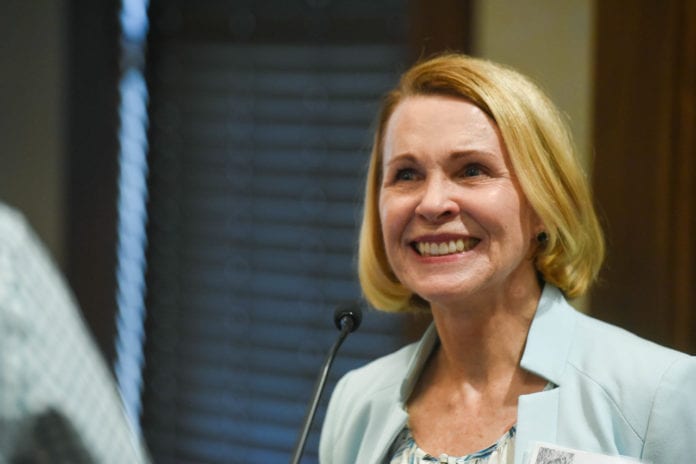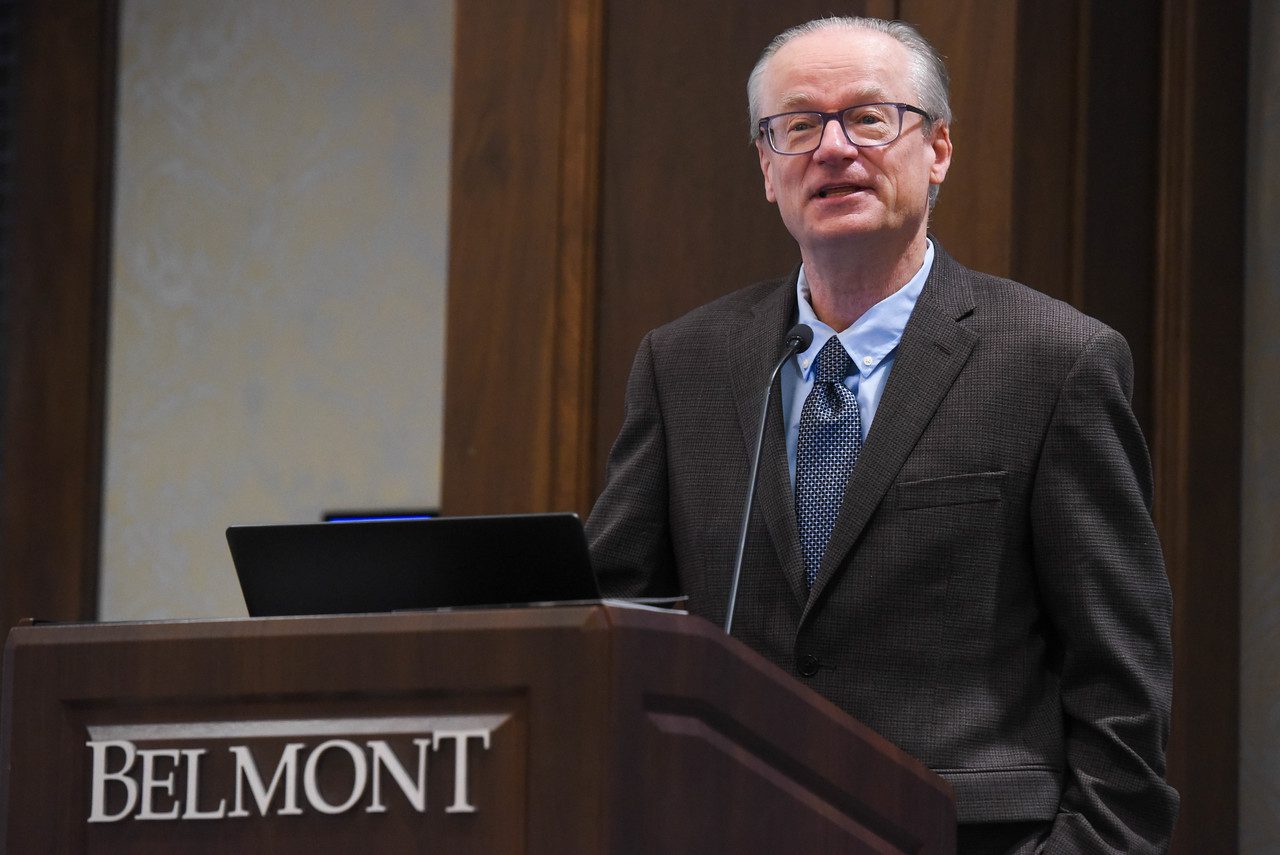
Belmont University’s 18th annual Humanities Symposium kicked off this week after its film series prelude. James R. Hansen, author of New York Times Bestseller “First Man: The Life of Neil A. Armstrong,” former astronaut Rhea Seddon and Margaret Lazarus Dean, associate professor and director of creative writing at University of Tennessee Knoxville, are just a few of the speakers who presented to students and led important discussions related to the symposium’s theme, “Mankind & the Moon.”

Hansen presented to students on Monday about the life of the first man to walk on the moon. Spending decades studying and lecturing about Neil Armstrong, Hansen shared details about the icon’s life that were widely unknown to the public. Hansen shed truth on a number of myths about Armstrong’s life, one of them being about a seemingly integral relationship reported by the media between a 16-year-old Armstrong and a man named Jacob Zint.
Zint invited Armstrong’s Boy Scout troop to his home observatory and allowed each boy to gaze through the telescope, claiming the experience resulted in a close friendship with Armstrong. Later on, Armstrong revealed to Hansen that he had never seen Zint again after the night his troop visited his observatory.
“This is so important because if you want to have the true identity of an individual, a story like this can be really misleading,” Hansen shared. In reality, Armstrong’s first love was flying, and he grew up with a passion for building model airplanes. Ultimately, after years as a pilot, Armstrong became an astronaut in September 1962.
On Tuesday, former space shuttle astronaut Rhea Seddon spoke to students about women in space and her experience as an astronaut. To begin her presentation, she first shared the birth of her aspiration to travel to outer space. As a child, her father took her out to the backyard during the “Space Age” to show her Sputnik, the world’s first artificial satellite launched by Russia. Amazed, she asked her father if she might be able to go to space one day, to which he answered yes.
In January 1978, she became one of the first six women astronauts. Seddon explained, “During that time, I came to find out that inspiration and aspiration require perspiration.” In her astronaut training, she overcame challenging physical obstacles and succeeded in her pursuit of going to space along with the rest of her five fellow women classmates.
“We set the groundwork by proving that women are not the weaker sex,” said Seddon. She went on to share her experiences in space leading three space shuttle flights and launching a number of satellites. “Do what you can, with what you have, where you are,” Seddon encouraged students.
For more information on the “Mankind & the Moon” events, visit the Humanities Symposium website.


